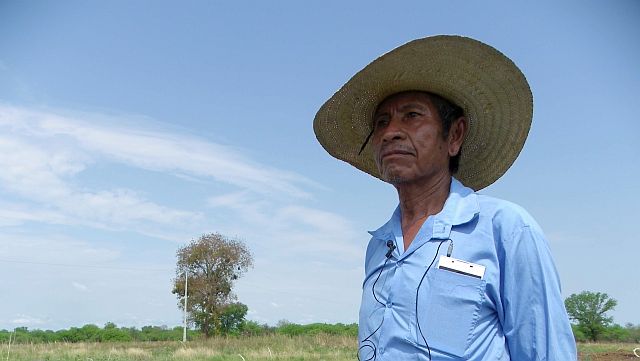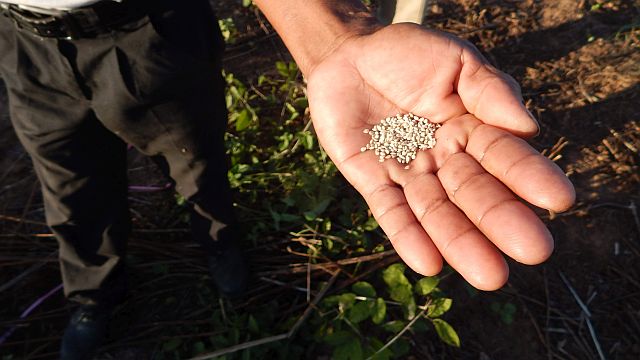Aníbal López (60) is the leader and traditional healer of Palo Santo, an indigenous village in the Dry Chaco region of Paraguay. He has published a book on medicinal herbs and plants, which he gathers in the forest nearby.

Aníbal López, village leader and traditional healer
Traditionally, the villagers also rely on the forest for honey, meat and caraguata, a plant from which they make fabrics. And while they keep a few sheep and goats, their food security is continually at risk because of the Chaco’s extreme weather; droughts lasting up to seven months are followed by heavy rains.
Palo Santo joined the Sustainable Chaco programme in 2017. This landscape governance initiative is funded by the Dutch government and run jointly by Solidaridad, local and regional authorities, Paraguay’s Agriculture Technology Institute and local dairy cooperatives. As part of the programme, Solidaridad works with local communities towards three main goals: access to water, crops for consumption and crops to sell.
>> Learn more about Sustainable Chaco’s results regarding access to water and crops for consumption
Between December 2017 and January 2018, Palo Santo and two other communities planted about 300 hectares of sesame with machinery provided by the government. It was the first time they grew sesame as a cash crop. “I did not know how to grow sesame, I did not know where to sell it, there was no control of expenses or income,” says Aníbal.
Nevertheless, he and the other project leaders knocked on the door of each house in the village, inviting every family to join the initiative. “Some said they didn’t have the time or that they were already working for other producers outside the community. But others joined in, and that’s how we started.”

Sesame: versatile, pest-resistant and a valuable cash crop
First there were 43 members, then 57. Solidaridad staff organized a workshop for everyone to learn how to manage the soil, control ants and eradicate burning in the fields. A third of the 2018 crop was lost to flooding, but that first harvest still amounted to 63,418 kilogrammes of sesame, sold to the local Shirosawa Company for around 70,000 US dollars. After the harvest, Aníbal met with his community to decide how to spend the profits.
“With that money, we didn’t buy expensive cell phones, equipment, or motorcycles. No, we bought 600 bricks and cement and hired a mason.” Each family also contributed towards sowing the 2018/19 sesame crop. This time 340 members from the three communities took part, planting around 485 hectares. The floods were even stronger than the previous year, but the families managed to harvest 53,326 kilogrammes for which Shirosawa paid them 63,660 US dollars.
We now have a bit more money for the family” – Aníbal López
The earnings for the 2019/20 harvest are already earmarked for fuel, a chainsaw, and materials to build more homes. “Whether it’s hot or less hot, sesame holds up well. We work hard, whatever the weather, because it pays off,” smiles Aníbal. “Earning a little, or earning a lot, we have a bit more money for the family. That’s why we are very happy.”
